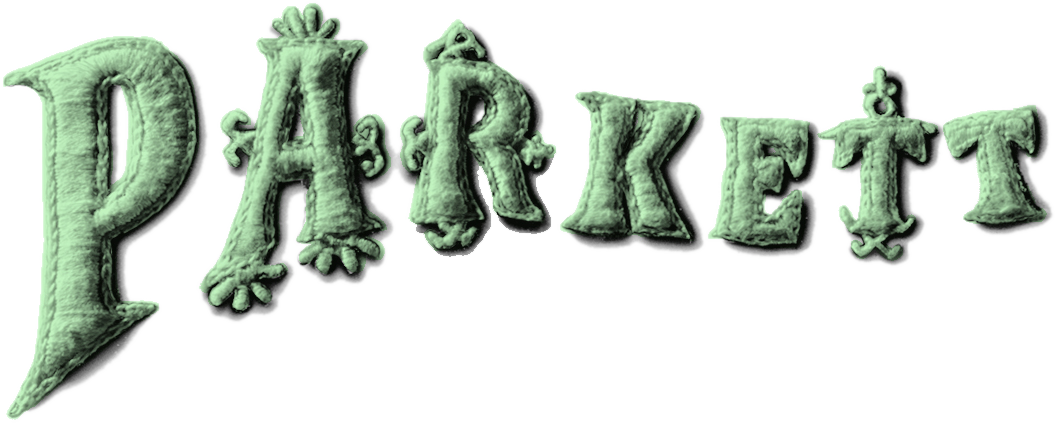Parkett Vol. 61 - 2001 | Liam Gillick, Sarah Morris, Bridget Riley, Matthew Ritchie
Liam Gillick
Read a selected text (PDF)
View edition
Sarah Morris
Read a selected text (PDF)
View edition
Bridget Riley
Read a selected text (PDF)
View edition
Matthew Ritchie
Read a selected text (PDF)
View edition
Spine: Francis Alÿs
Cumulus:
Cumulus America (PDF)
Cumulus Europa (PDF)
Miscellaneous:
Liam Gillick text in Chinese (PDF)
Sarah Morris text in Chinese (PDF)
Paul Etienne Lincoln by Elisabeth Kley (PDF)
U.S. & Canada
Please place your order through our distributor D.A.P. here.
Browse Selected Texts and more on the Collaboration Artists
Editorial
Interwoven lines and web-like structures attack the retina and send us reeling. Anyone gazing at Bridget Riley’s anti-contemplative paintings experiences absolute presence. This volume of Parkett, for once with four collaboration artists, communicates “modernity”— a modernity that is advanced, revised, and references everyday life. As if we were standing solidly in the present, unfettered by unduly profound ideals, with mind and senses exploiting all available means of perception in order to probe previously hidden potential. At the same time this volume looks into the contingencies of perceiving world, from the largest to the smallest scale. In their essay on Matthew Ritchie our contributors Peter Galison and Caroline Jones (science historian and art theoretician) observe that art is invading scientific terrain, to the great delight of all those involved.
In Liam Gillick’s novels and essays, we read about devices representing “think tanks about think tanks,” just as the “stories about stories” in Matthew Ritchie’s pictures could refer to “the role of an observing subject” in scientific research.
Networks thread their way through this volume of Parkett: from invisible networks, underlying everything that is material and immaterial and igniting the imagination, to the mighty web of vanishing lines that define our experience of modern cities. These four collaboration artists all explore “abstraction,” as a new, unbounded and paradoxical territory. Sarah Morris’s pictures and films show how “abstraction” leads as much into painting as away from it and into the reality of life, while Liam Gillick’s spatial constructions transform the concepts of minimal art so that the movement’s historical framework seems almost physically palpable.
Since its inception Parkett has subscribed to the intellectual exchange between Europe and America. These endeavors have now culminated in an exciting event and a great privilege: the Museum of Modern Art in New York, as the embodiment, in the history of Modernism, of successful Transatlantic relations, has devoted an exhibition to Parkett, “Collaborations with Parkett, 1984 to Now,” on view from April 3 to June 5, 2001. What Deborah Wye and her team have mounted in the Print Department is more than an extraordinary indication of esteem. It has been an undiluted delight for us to study the MoMA’s clearly inspired and surprising presentation, and once more to experience the incomparable project that has emerged thanks to the commitment of hundreds of artists and hundreds of writers over the past seventeen years.
Table of Content
Sunbeams from Cucumbers: Paul Lincoln by Elisabeth Kley
Bridget Riley
Supposed to Be Abstract, Bridget Riley in Conversation with Robert Kudielka
Not Knowing Bridget Riley by Dave Hickey
Liam Gillick
Literally No Place – An Introduction by Liam Gillick
Liam Gillick: A Debate about Debate by Gregor Stemmrich
Thought Experiments by Peter Wollen
Sarah Morris
To Sit with the Speed Addict by Thyrza Nichols Goodeve
Capital – The Formal Seat of an Informal Country by Joe Klein
Almost – Abstraction and Sarah Morris by Martin Prinzhorn
Matthew Ritchie
Not Two, Not Three, Not Even Four Dimensions by Cay Sophie Rabinowitz
Theories and the Dead by Peter Galison & Caroline A. Jones
The Least You Need to Know About Radio by Ben Marcus
Phases of a Monument Liisa Robert’s Sidewalk, Cumulus from America by Okwui Enwezor
Only Clouds, Cumulus from Europe by Marina Warner
Puzzling the Connoisseur by Stella Rollig





